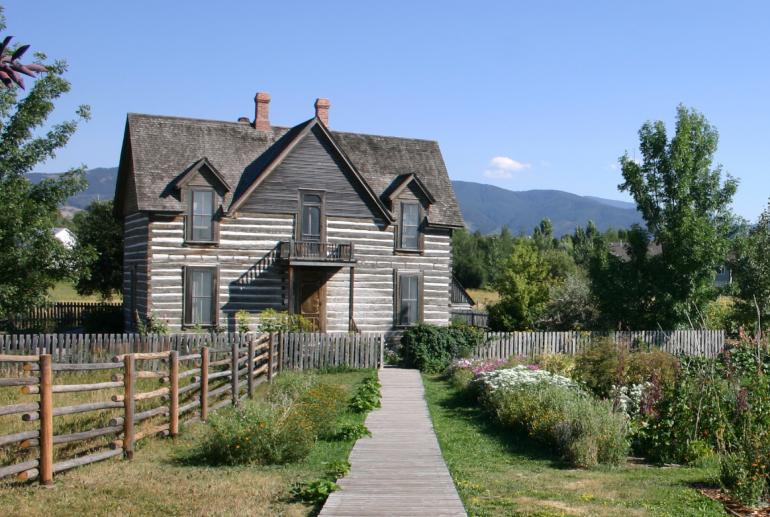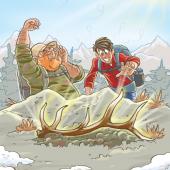The Tinsley House
Ever wonder what life was like for Bozeman-area homesteaders in the 1800s? The Museum of the Rockies has taken painstaking efforts to keep the memory of our geographic forbears alive, by recreating a realistic portrait of the Gallatin Valley’s early days. In 1989, the museum relocated and restored a 100-year-old, 60-ton house to Bozeman, from just outside Willow Creek. Located behind the museum, the Tinsley House, or Living History Farm, provides an interactive glimpse into the daily lifestyles of 19th-century Montana residents. Visitors may witness costumed role-players plowing the fields in preparation for harvest, cooking a chicken potpie from scratch, or weaving a rug on the loom upstairs. Wandering through the dining room, parlor, master bedroom, and children’s rooms gives a realistic sense of life “in the old days.” Children are allowed to try on outfits and play with toys on display. There’s also a functioning outhouse and water pump that visitors can try out. The sounds of clanking metal invite people to explore demonstrations at the blacksmith’s shop, while clucking chickens and soup simmering on the wood stove offer an idea of the kind of self-sufficiency farm life required before the days of gas stations and mini-marts. All these aspects of the Tinsley House allow visitors to garner a sense of how early settlers used resources, underwent arduous daily labor, and entertained guests.
The Tinsleys, like many other families at the time, migrated west during the Civil War in search of a new and improved life. William Tinsley worked for Wells Fargo State Company, and Lucy Nave was a dressmaker in Virginia City. They met there, married, and relocated to the Gallatin Valley. William and Lucy Tinsley constructed the house in 1889, after their original homesteader cabin (the same size as the blacksmith’s shop) could no longer accommodate their growing family—which ultimately included eight children. The contrast between the homesteaders’ original cabin and house illustrate the harsh conditions early settlers endured when first inhabiting the Gallatin Valley, and how hard work, patience, and opportunity allowed them to improve their lifestyle considerably.
The Tinsley house is constructed of logs taken from the Tobacco Root Mountains, which took the Tinsleys two years to accumulate. Many interior items, such as the wood stove and commode, were ordered from the Sears catalog. The house also contains items generously donated over the years by Tinsley descendants.
The Tinsley House opens in early June. Summer hours for the Museum of the Rockies are Monday through Sunday 8-8; the Tinsley House itself is open 8-5. Admission to the Tinsley House is included in the Museum’s standard admission fee.












